The Greatest Male Nudes in Art History (NSFW!)
Nudity started being an important subject in art in ancient Greece. The male body was celebrated at sports competitions or religious festivals, it...
Anuradha Sroha 7 June 2024
When you think about it, most of the events throughout our lives take place in beds. From birth to death, beds are imbued with the ultimate expression of life – love.
Indeed, what is more intimate than a bed? Depictions of beds in art! Let’s take a look into people’s daily lives and intimacy.
One of the most famous beds in classical art history is of course this Netherlandish bedroom scene by Jan van Eyck. The Arnolfini Portrait, now in the National Gallery in London, was executed in 1434 and its subject is still debated by art historians.
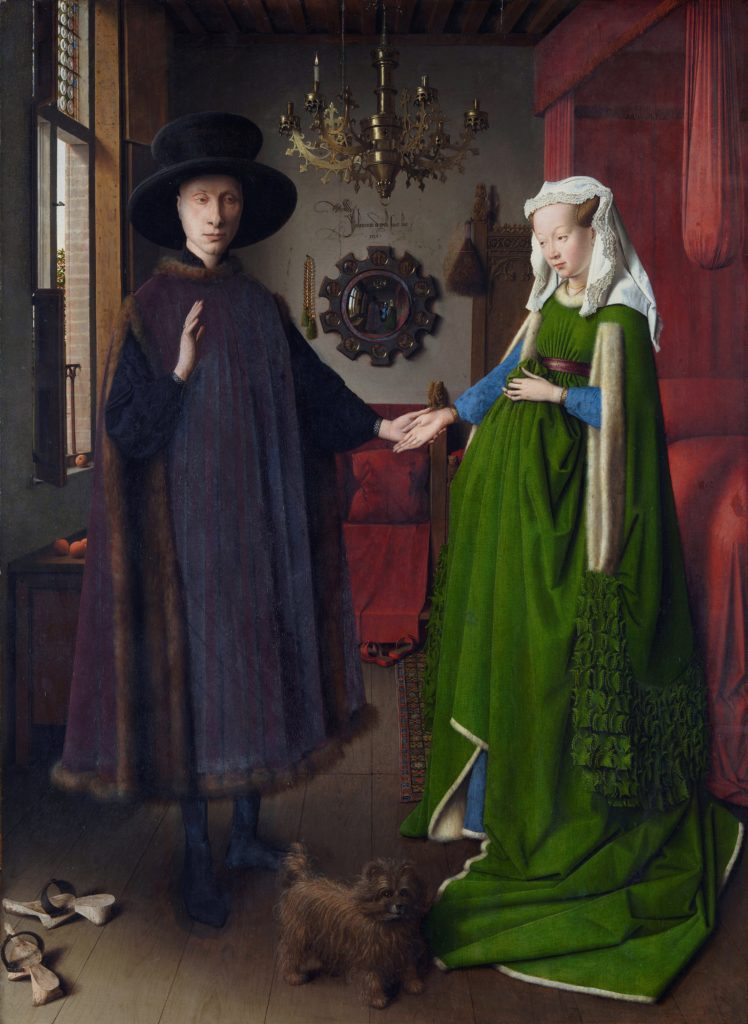
Historian Erwin Panofsky assumed that it might be a celebration of an intimate wedding. As is usual in art, every detail depicted in this scene has its purpose, symbol, and meaning. Refined furniture in the chamber and expensive clothing indicate the high social status of the sitters.
One element in this painting that particularly draws the eye is the bed. It is one of the main pieces of furniture in a house; therefore its size, choice of wood, workmanship, and linen are important indicators of their wealth. In this scene, the bed is imposing, red sheets and elaborate hangings cover and decorate it. The fact that the fabrics are dyed and elaborate is also a testimony to the owner’s fortune.
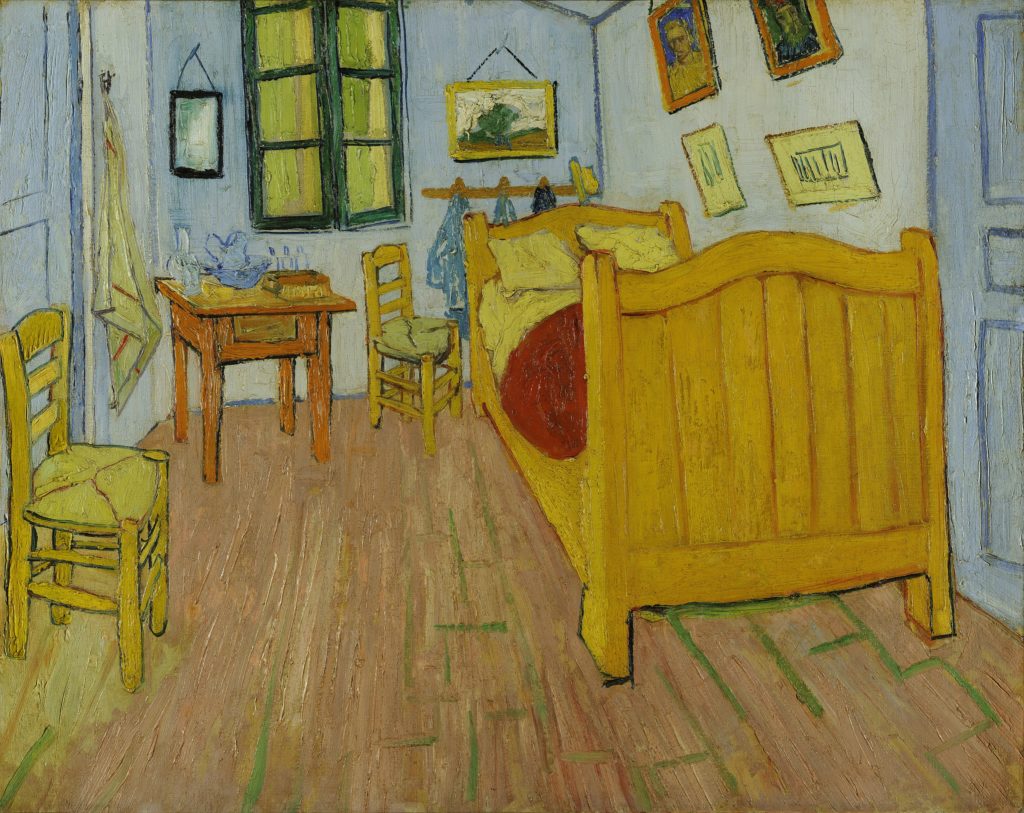
In Arles, Van Gogh chose to paint his bedroom, which is not a trivial matter. Bedrooms are the incarnation of our tastes and personalities. The paintings on the wall echo his artistic career (we can see portraits of his friends Eugene Bosh and Paul-Eugene Milliet) and his attraction to art. What stands out in this painting is the simplicity of the room and its composition.
I wanted to express absolute rest through all these various tones.
Vincent van Gogh, Letter to Theo Van Gogh, 1888
Thus, the room acts as a symbol of tranquility for Van Gogh. The main object of the room is the yellow and red bed. Meanwhile the overall picture emits a strong sense of calmness stems. The bed is simple and solid, which emphasizes the ideas of comfort and security. One could assume this is exactly what the artist was looking for at the time.
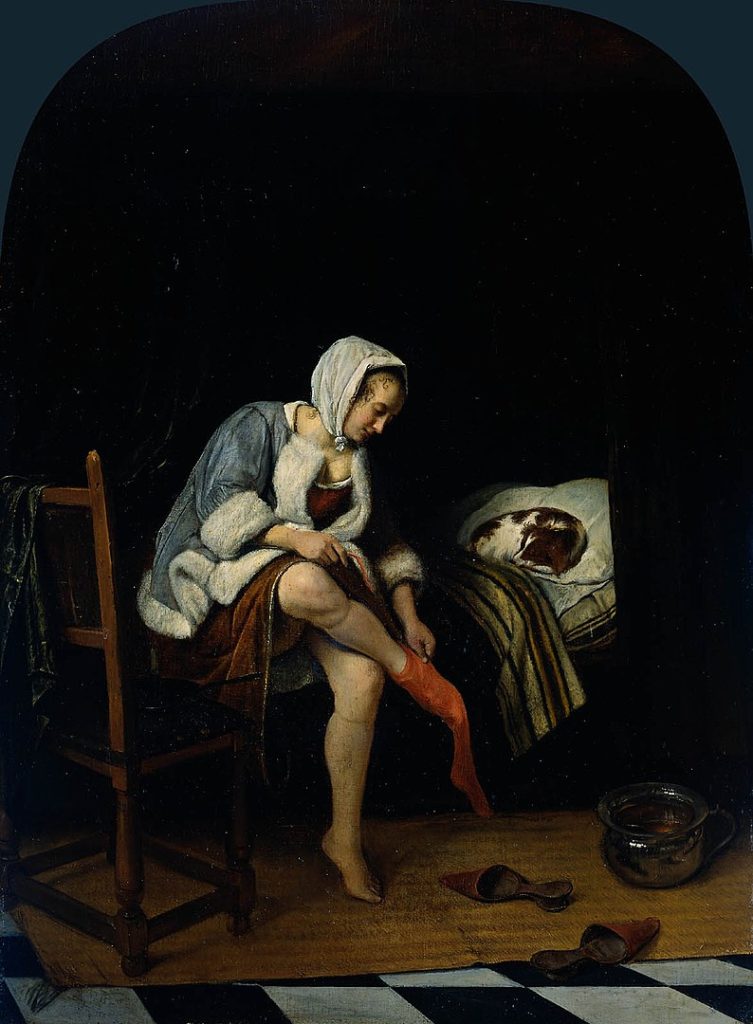
Genre scenes are Jan Steen‘s favorite subject. The bed on which the woman is seated, as well as the somber setting, symbolize the intimacy of the scene. A young woman is slowly undressing, taking off her stockings, revealing the marks of her garters on her calves in the process. Her hiked-up skirt also offers a view of her naked legs. The eye of the viewer progressively climbs up her thigh, gazing at the darkness inside of her skirt. This washing scene is laden with an erotic atmosphere which is underlined by the presence of the bed, the symbol of daily intimacy.
Depictions of beds are often linked with their implication of love. They are therefore imbued with an erotic aspect, which takes us into a physical and sexual form of intimacy.
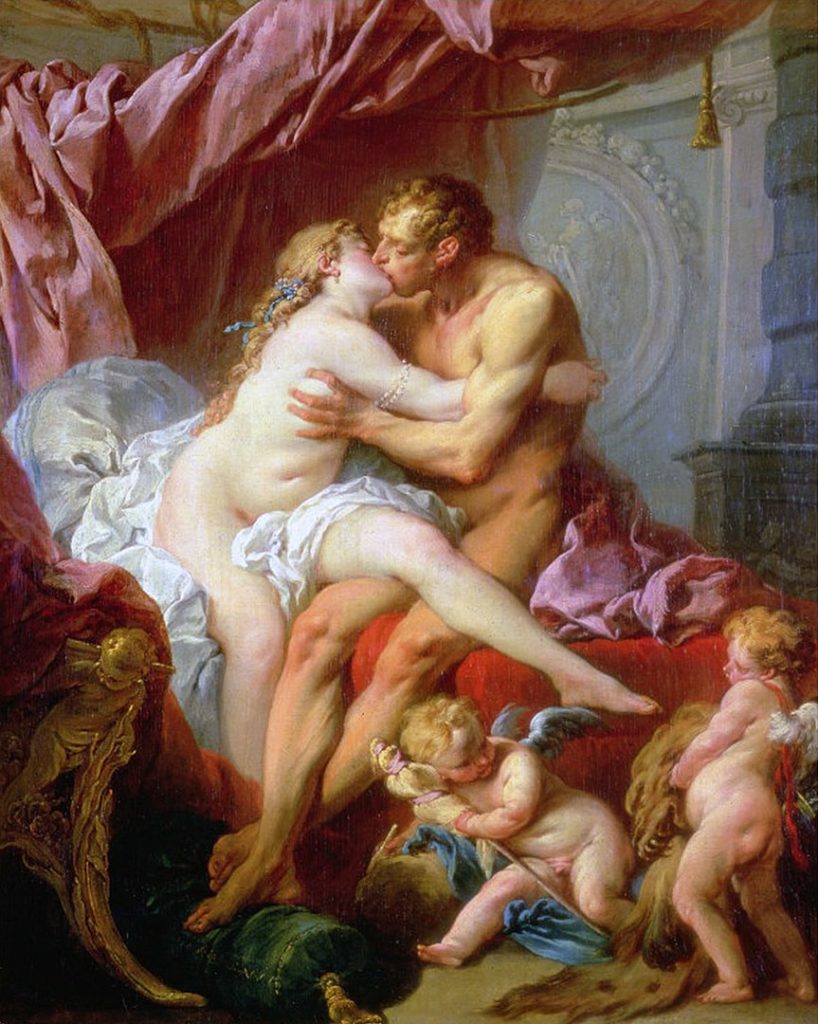
Beds can also be a symbol of seduction and the power that comes with it. The myth of Hercules and Omphale is a great example of this. Omphale was the queen of Lydia, whereas Hercules was a Greek hero. In the myth, Apollo’s oracle advised him to sell himself as a slave to the queen Omphale. She forced him to do all sorts of tasks and married him, offering him back his liberty. She thus seduced him while he was her slave.
Boucher’s painting depicts Hercules as he falls into the queen’s arms and into her bed. The bed, therefore, represents the accomplishment of the queen’s seduction. The woman’s leg, up over her lover’s legs, symbolizes her domination. The two little putti carry the symbols of their relationship: a beast hide (for her) and a spinning tool (for him). The traditional scheme of domination between men and women and their activities is inverted here as the hero submits to the queen.
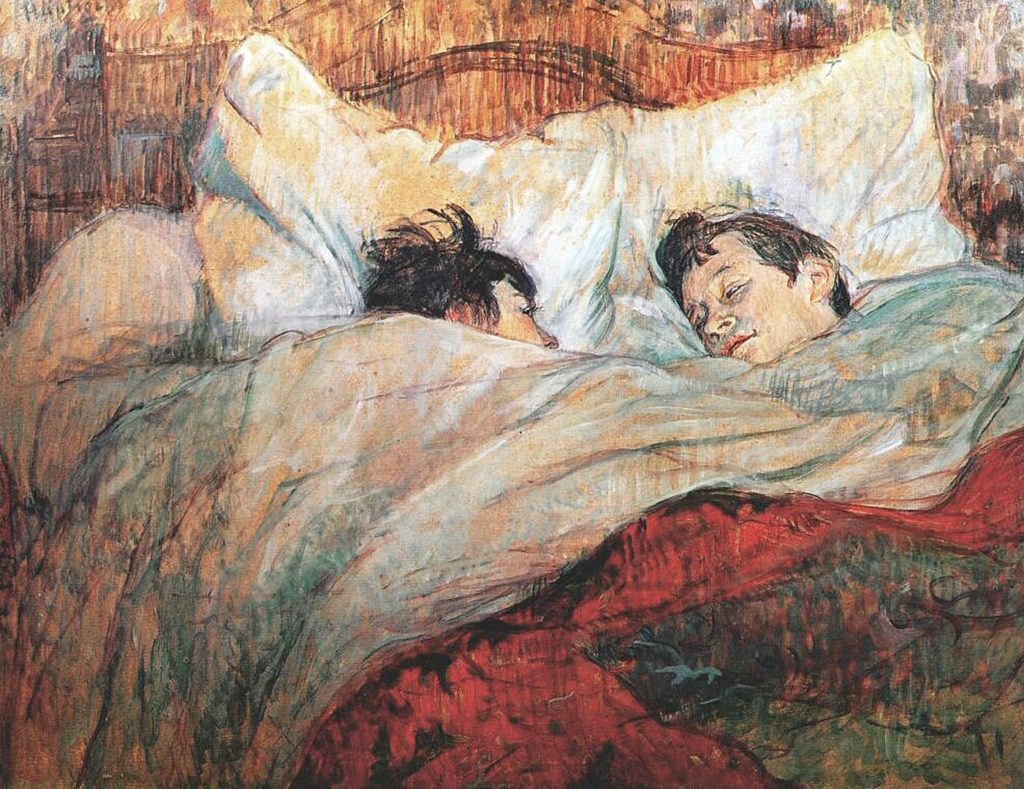
Here we see a scene of lovers gazing and kissing from a series of four paintings that depict lesbian couples in bed. In the first painting you can only see the heads of the lovers, facing each other, the sheets hiding their bodies. As the emphasis is on the bed, the setting becomes intimate and warm, favorable to a moment of intimacy. The use of warm colors such as red and brown also conveys the coziness of the scene. The women are wrapped in a loving embrace in this image.
The focal point of the next scene is also the bed. This is the development of the initial image. Toulouse-Lautrec painted their heads, arms, and the upper parts of their backs. The painting does not depict pure sentimental intimacy, but rather the result of it – the kiss.
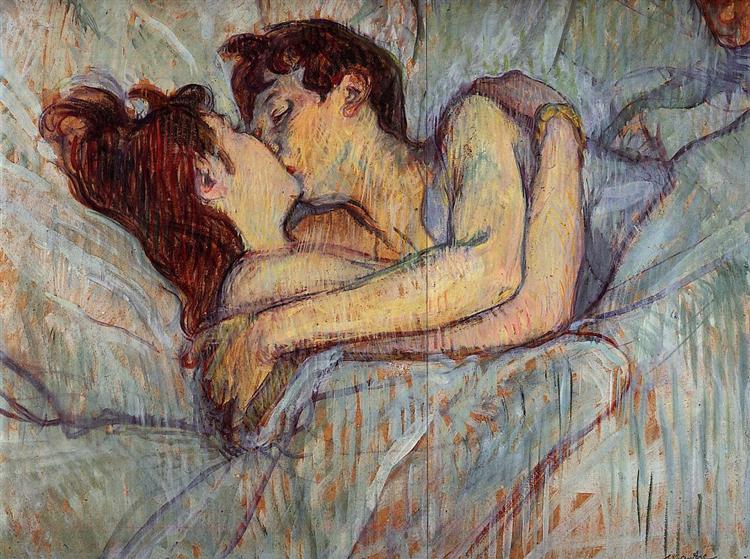
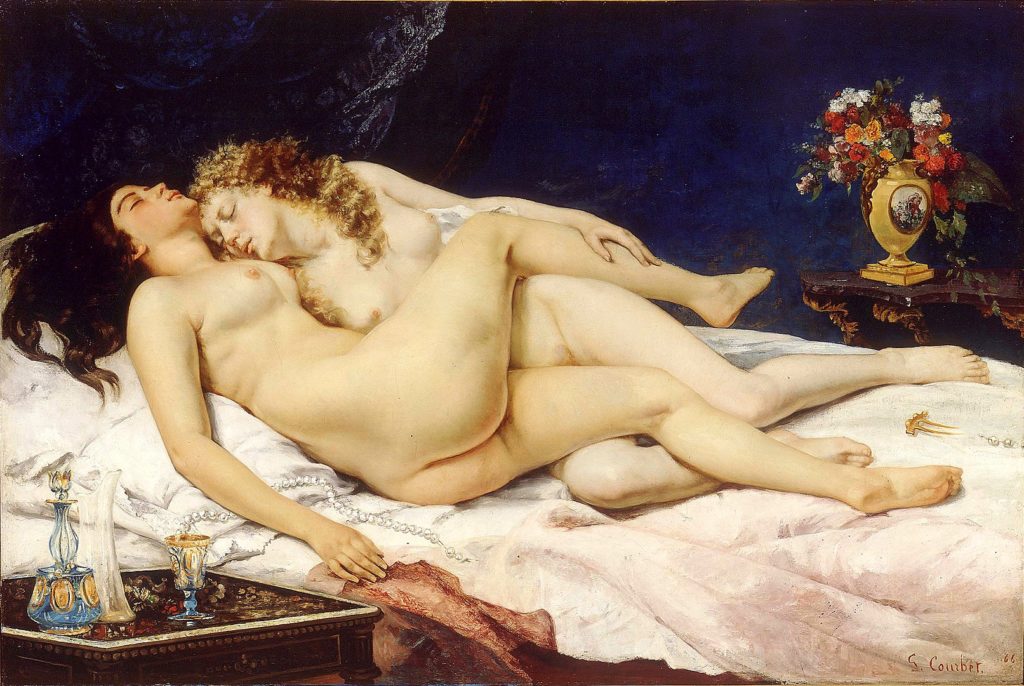
Once more, the bed is set as the place for the physical expression of passion and love. When couples lie in the bed or when it is stripped, it usually symbolizes or testifies to recent sexual intercourse.
In this painting Courbet depicts two women, naked and asleep in a bed. The painter decided to break the academic rules: at the time, monumental canvases could only be dedicated to historical, biblical, or mythological subjects. Here Courbet embodied the aesthetic of 19th-century Realist artists.
In this painting, the posture of the women, embracing each other naked and asleep with their clothes and jewelry scattered all over the bed, are indications of a carnal moment that just ended.
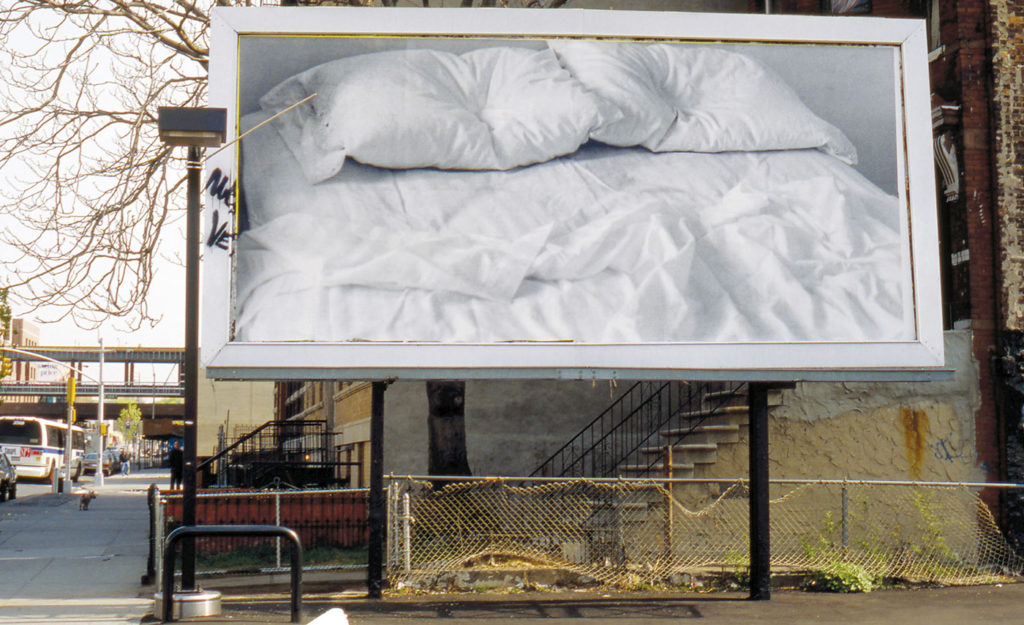
When MoMA offered to exhibit his work, Felix Gonzalez-Torres refused and asked them to rent him billboards instead. On the billboards, he put up his pictures. On this one, we can see an empty bed, the pillows still hold the head shapes from the people who slept there. The undone bed is such a symbolic object, reminiscing about the presence of the couple or a person who just slept there. However, it does not necessary imply what happened there. By confronting passersby with it, Gonzalez-Torres portrays the universality of the meaning of this untidy bed.
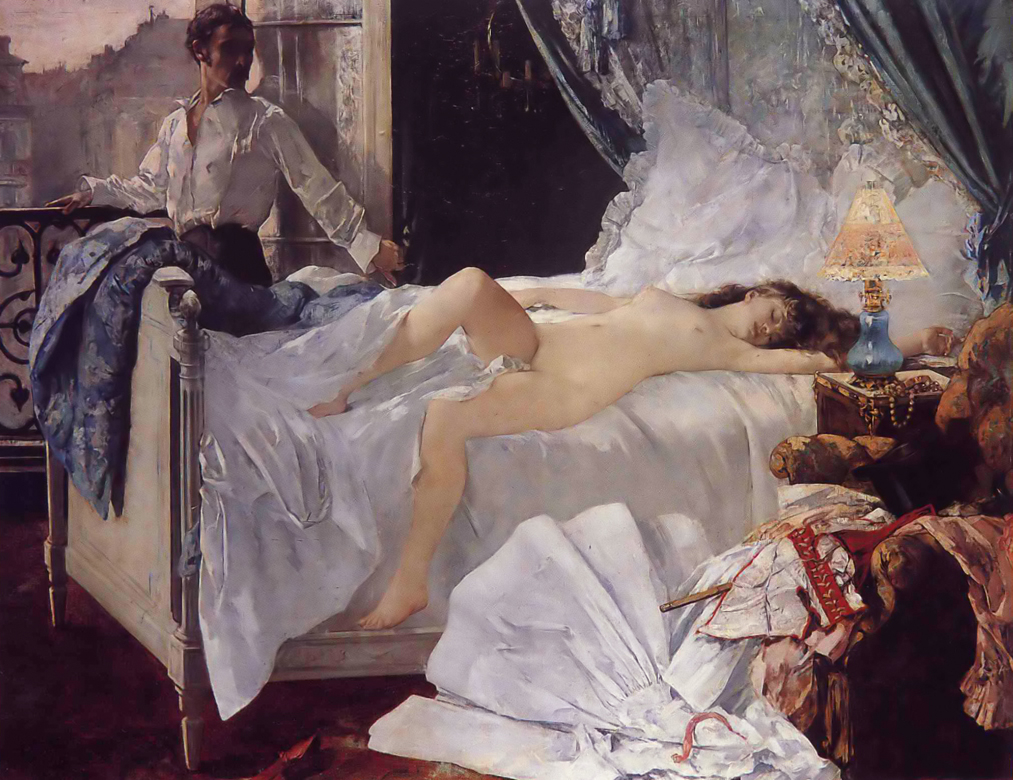
Henri Gervex, inspired by a poem written by Alfred de Musset depicts the tragic end of a ruined bourgeois man—Rolla—who was in love with a sex worker. The young man used all his money to spend the night with his dearly beloved. Here, the bed is the representation of the only place where they can meet, the only place where he feels whole, and the last place he chose to stay, moments before he dies by suicide. His despair is almost palpable as he stands next to the window he is bound to jump out of. He looks one last time at the young woman sleeping in the vestiges of their night of passion.
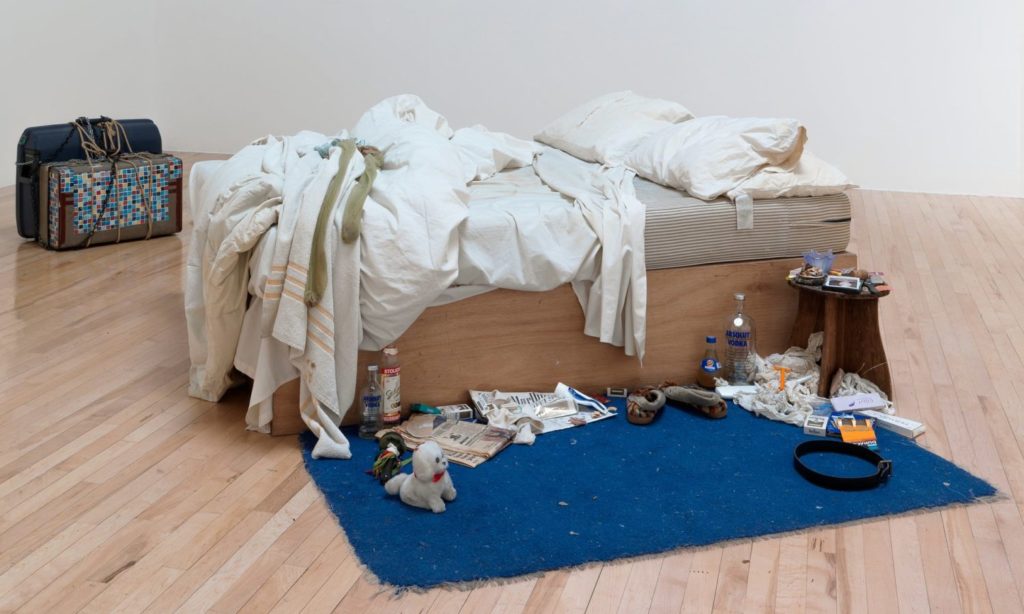
Tracey Emin’s bed is also a testimony to her despair. She chose to exhibit at the Tate Gallery the very bed in which she spent several days in a bout of depression due to a romantic disappointment. Hence the chaos of the bed and the objects lying on the carpet. They are a depiction of her state of mind at that time. Empty bottles of alcohol, used condoms, pregnancy tests, and cigarette butts are scattered all around; all of these objects highlight her despair.
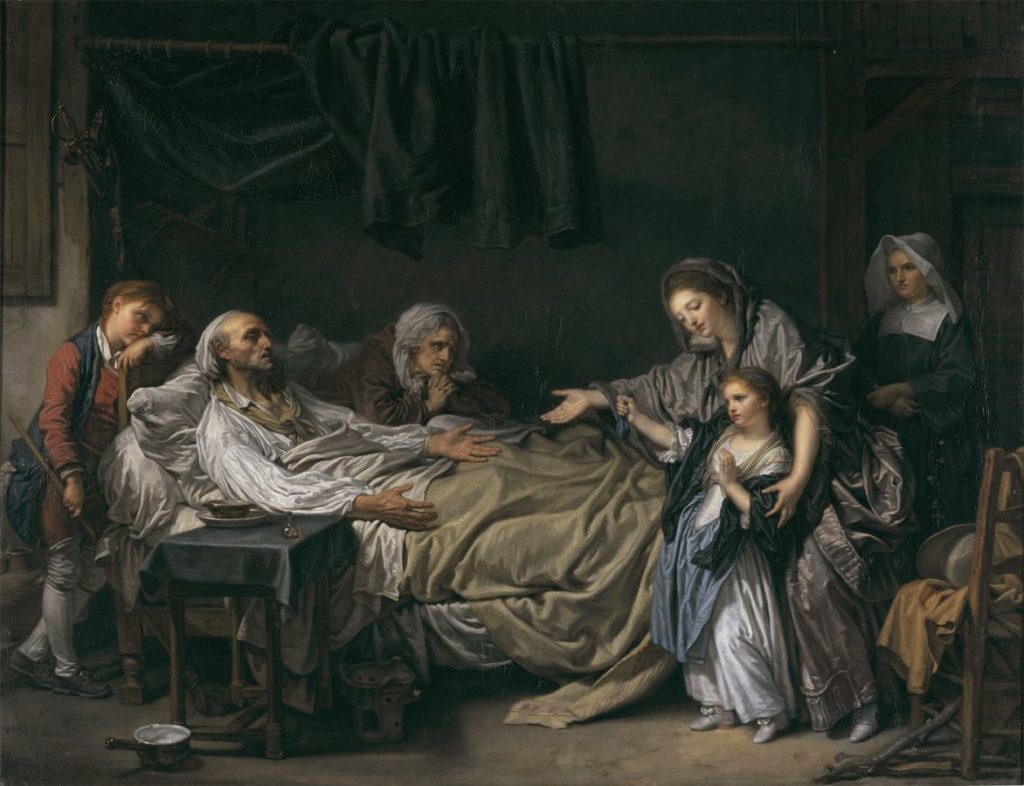
Jean-Baptiste Greuze is famous for his genre scenes. His paintings recount French daily life and give a view into the relationships of the families depicted. In The Charity Lady, he tries to convey a specific lesson of morality. In this painting, the bed and its occupant, an old dying man, are central. They are the starting point of the story being told. The man’s sickness is thus linked to the presence of the bed, which enhances the pity we feel for him. He is the subject of the rich woman’s lesson to her daughter. The movement of her hand shows the little girl, as well as the viewer, that they must give charity to the dying man, whose nobility is noticeable through the hanging sword above his head.
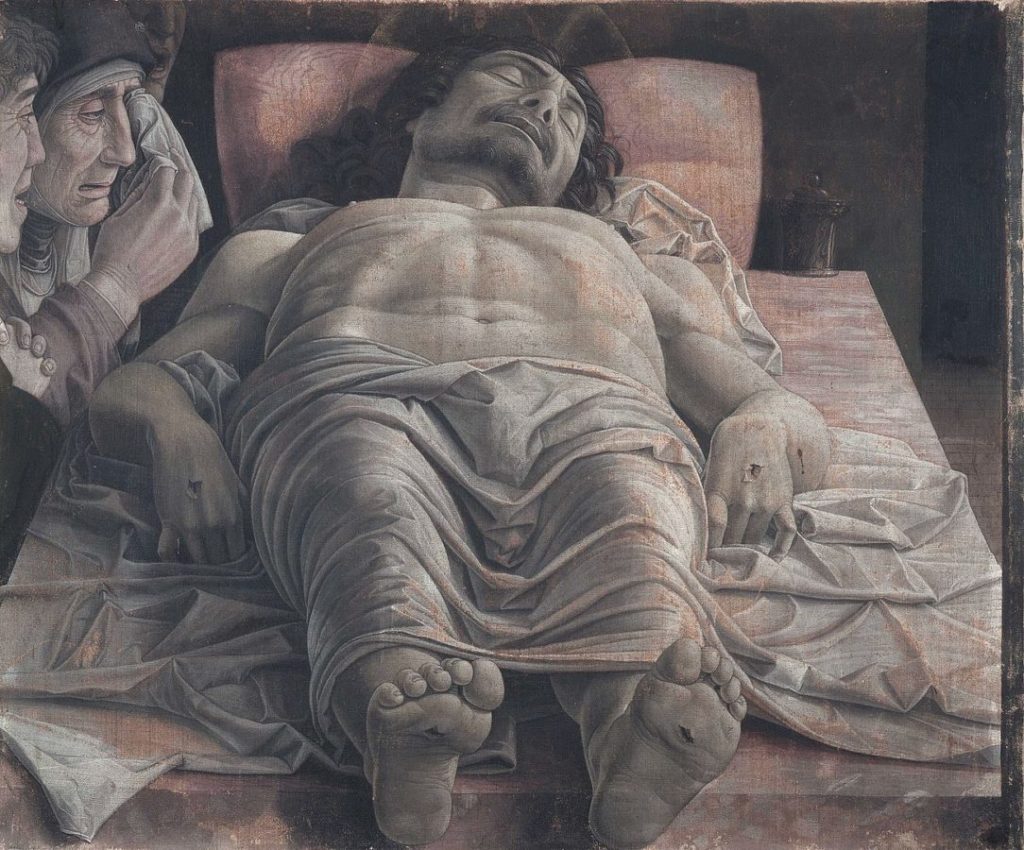
One of the most famous representations of death is that of the dying Christ by the Renaissance painter Andrea Mantegna. In this depiction of the Lamentation (the moment after the Deposition), the dead Christ lies on a bed, mourned by his mother Mary and Mary Magdalene. The spectator’s viewpoint in this painting is interesting— Christ’s foreshortened feet are in the foreground and his stigmata are clearly visible. This perspective, focused intimately on Christ, gives a dramatic effect. In addition to the highlighted stigmata, we can clearly see a deep wound in his thorax. In art history, these are the symbols of Christ’s Passion, one of the most crucial motifs in Christian iconography.
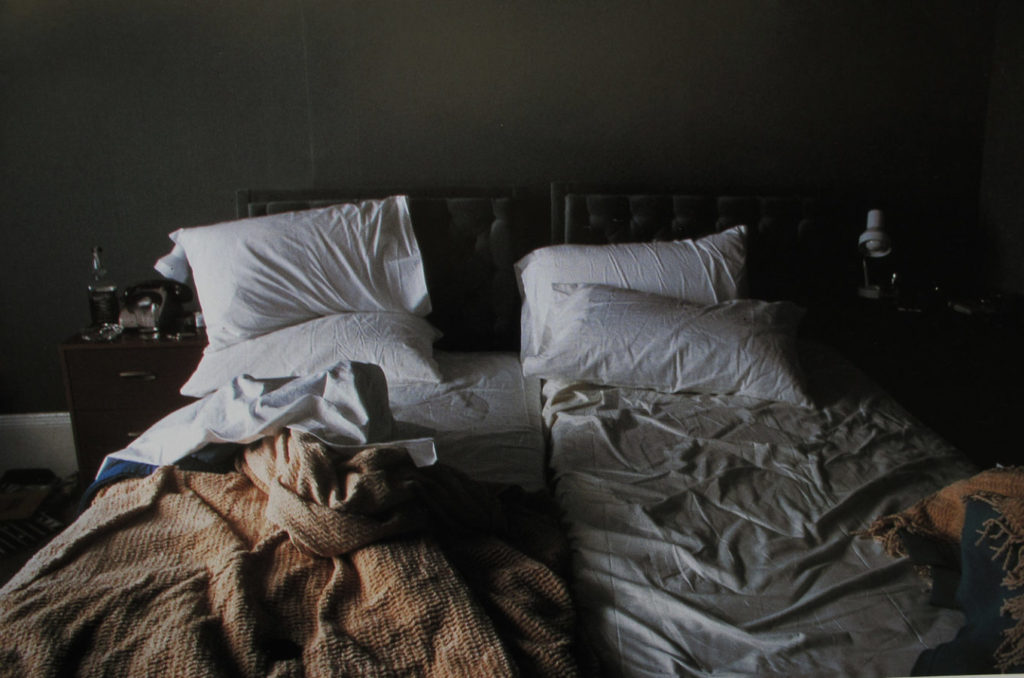
Beds are a recurring theme in Nan Goldin‘s work as she reports her daily life through her photos. Relationships and love life are therefore an important part of her oeuvre. With these empty beds, she shows an absence of loved ones. This longed-for but missing presence—implied by the undone bed— is the subject of the picture. It thus draws a dramatic and tragic aspect in its emptiness. As in Felix Gonzales-Torres’ bed, this absence is synonymous with death, hence the forever absence of the loved one.
DailyArt Magazine needs your support. Every contribution, however big or small, is very valuable for our future. Thanks to it, we will be able to sustain and grow the Magazine. Thank you for your help!